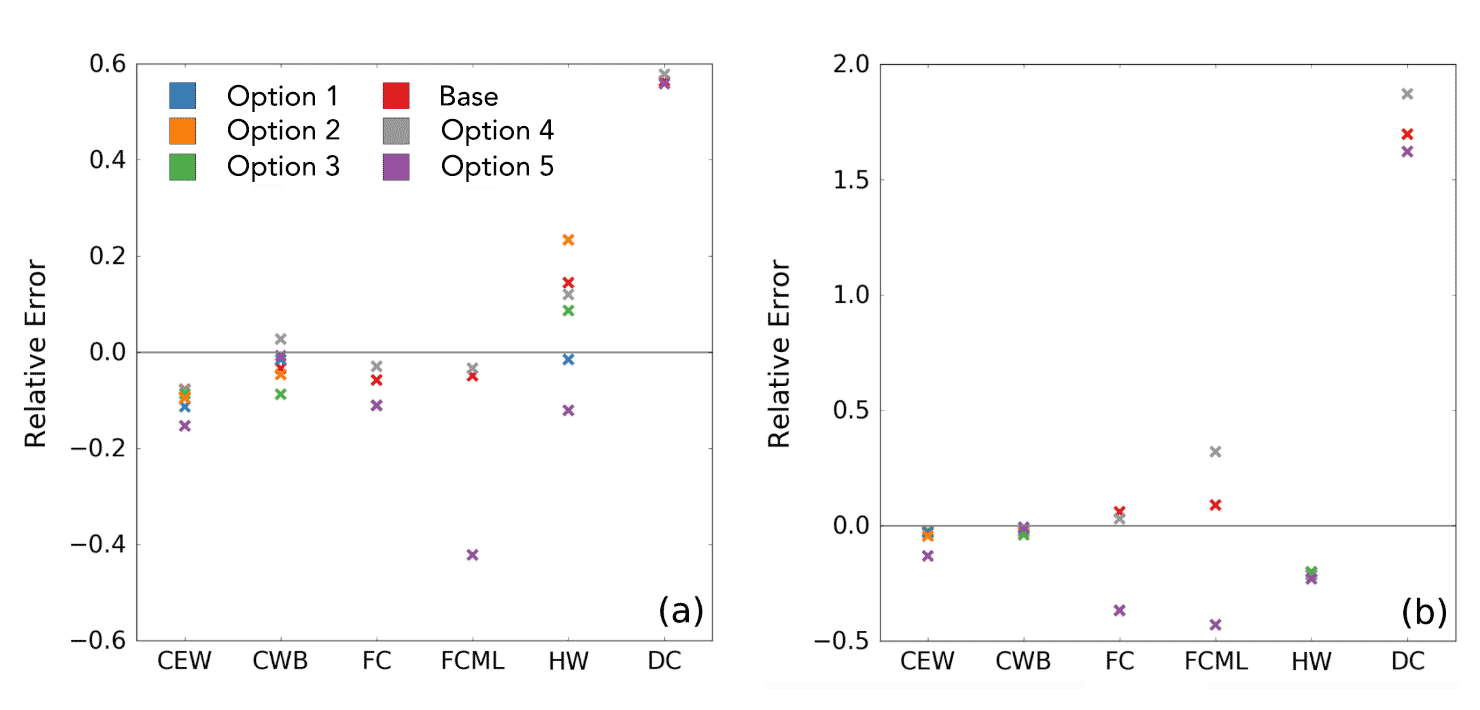KPP Parameterization Evaluation Against LES Results
A Fresh Look at the K-Profile Parameterization and Evaluating it Against Large Eddy Simulation Results.
Science
The K-Profile Parameterization (KPP) is an ocean vertical mixing parametrization scheme that is used by many ocean models to represent small scale exchanges of heat, salinity, momentum, and other important constituents (like carbon) that cannot be directly resolved. Even though it has been used by many modeling centers for more than 20 years, it has not been subject to rigorous evaluation against Large Eddy Simulation (LES) models.
A significant number of large eddy simulations were conducted at very high resolution to assess the fidelity of a very prominent turbulence parameterization for ocean models. Through the evaluation, a new configuration of the KPP model was found that retains the same fidelity of the original model. The results point out a number of critical directions for future research of vertical mixing parameterizations.
Impact
The scientists have derived and presented a new configuration of KPP that is much simpler and not as prone to error in certain scenarios as the original KPP model. The new KPP scheme is clean and clear and the examination is now serving as a launching point for new and exciting veins of research into deficiencies noted in the KPP model. The LES test cases developed to assess KPP are now being used by other groups to assess their different mixing models.

Relative error in the ocean surface boundary layer depth (KPP – LES) / LES. The boundary layer depth is averaged over the final 6 hours of each simulation. Two vertical grid spacings are shown: (a) 1 m and (b) 10 m. The coloring represents different alterations to the KPP scheme tested (red is the original formulation). The x-axis lists the different forcing scenarios applied to the scientists’ LES and represent a range of oceanographically relevant regimes. CEW = cooling, evaporation, and wind; CWB = cooling with background shear; FC = free convection; FCML = free convection with a mixed layer; HW = heating and wind; and DC = diurnal cycle.
Summary
This study conducted a series of Large Eddy Simulations (LES) across a range of oceanographically important forcing regimes to examine the fidelity of the K-Profile Parameterization in a single column configuration. The simulations spanned a range of stabilizing and destabilizing surface forcings, and thus covered highly turbulent and more intermittent turbulent cases. Notably, KPP includes a representation of turbulent fluxes of temperature and salinity across regions without a local gradient. Physically this is a representation of large, ocean surface boundary-layer-filling eddies.
Performed simulations tested all of the physical and numerical assumptions of KPP. For example, KPP assumes that the diffusivity predicted by the scheme must match that predicted by mixing schemes for the ocean interior. Scientists also tested the KPP representation of entrainment, a critical process to accurately simulate the ocean carbon cycle. Numerically, vertical grid spacings from 0.1 m to 20 m and time steps from 30 s to 1 hour were tested.
Results show that KPP is very sensitive to resolution, but this sensitivity varies from test to test. In some circumstances, the resolution dependence could be reduced by altering the KPP entrainment rate equation. Positively, KPP is not sensitive to the chosen time step, unlike other prominent models of vertical mixing. Physically, the non-gradient mixing parameterization is effective in strongly convective regimes but is incomplete. Currently, the KPP non-gradient term is dependent on the surface forcing alone. The results suggest that this term must also depend on in-situ model fields. Finally, the testing has shown that matching diffusivities from KPP to other mixing schemes does not significantly improve model results and in some test cases degrades fidelity. To this end, researchers propose a new configuration of KPP that does not match diffusivities. This configuration performs as well, and in some cases better, than the original KPP and is being used for E3SMv1.
Publication
Contact: Luke Van Roekel, Los Alamos National Laboratory
Funding: This research was supported as part of the Energy Exascale Earth System Model (E3SM) project, funded by the U.S. Department of Energy, Office of Science, Office of Biological and Environmental Research. Michael Levy and Brian Kauffman were partially supported by the U.S.Department of Energy, Office of Science, Office of Biological and Environmental Research SciDAC grant DE-SC0012605 to NCAR. NCAR is sponsored by the National ScienceFoundation. Brandon Reichl was supported through the Cooperative Institute for Climate Science at Princeton University and the Princeton Environmental Institute at Princeton University through the Carbon Mitigation Initiative.


